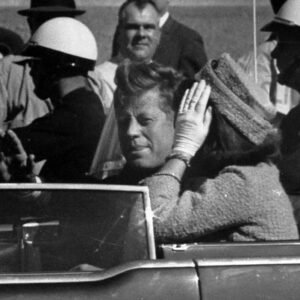60 Years Later, a Review of the JFK Assassination

The 60th anniversary of the John F. Kennedy assassination approaches, and that event is quickly receding from living memory. Even younger baby boomers, now senior citizens, do not remember where they were when JFK was shot.
Ten years ago, on the 50th anniversary, I wrote a Chicago Tribune piece supporting the Warren Commission’s conclusion that Lee Harvey Oswald killed the president.
Oliver Stone and Zachary Sklar, the filmmakers responsible for the 1992 film “JFK,” responded and posited a cover-up. They asserted, “As co-screenwriters of the film … we made every effort to be as accurate and true to historical fact as possible.”
A decade later, starting with the cornerstone of the “cover-up” — the magic bullet — history requires a fact check of some of the filmmakers’ assertions.
“JFK”: “Warren Commission staffer (later U.S. senator) Arlen Specter’s ‘Magic Bullet Theory,’ which attempted to account for the seven wounds in Kennedy and Texas Gov. John Connally with only two bullets, defies the laws of physics and strains the credulity of any reasonable person.”
Stone’s movie portrays a crucial, misleading inaccuracy. In the trial scene, Kevin Costner’s prosecutor, Jim Garrison, seats Connally directly in front of and level with JFK, creating the illusion of a magic bullet. As motorcade photos clearly demonstrate, Connally was in a jumpseat, left and below JFK. Change Hollywood’s erroneous depiction of the passengers’ positions and laser analysis demonstrates the bullet trajectory from the Texas School Book Depository aligns perfectly with the two men’s injuries.
Given the real-life alignment, no alternative trajectory or sniper position explains how Connally incurred his verified injuries unless a bullet passed through JFK immediately after JFK was hit. Connally’s initial back wound means he had to be hit by the same bullet. Anything else is impossible, and no one has explained otherwise. Why did the film, which touted its faithfulness, misrepresent this readily available fact: slipshod research or deliberate deception?
“JFK”: “Lee Oswald was given a nitrate test after his arrest, and it proved that he had not fired a rifle that day.”
The paraffin test suggesting Oswald did not fire a rifle has long been discredited as unreliable and was abandoned years ago.
“JFK”: “According to his fellow Marines, Oswald was a mediocre marksman at best.”
Sophisticated analysis of sniper tracking in a 2018 issue of the Journal of the Association of Crime Scene Reconstruction reported the former Marine took the kill shot at a slow-moving target at 81 meters versus 183 meters encountered during his Marine Corps marksmanship training. He had a telescopic sight and gun rest versus iron sights and no gun rest in the Marines.
“JFK”: “The most skilled FBI sharpshooters tried to duplicate the shooting feat within the time frame set out by the Zapruder film and failed.”
Sharpshooters could not match Oswald’s shots in early reconstructions because they were charged with shooting three shots in six seconds. The interval was between eight and 11 seconds, a much easier undertaking.
“JFK”: “The Zapruder film clearly shows the president’s head and body snapped back when hit by the third shot, meaning that it came from in front, not behind.”
After the third shot, the president’s head did move forward for a millisecond. In addition, Nobel Prize-winning physicist Luis Walter Alvarez demonstrated the prominent backward movement was caused by “jet effect,” fluid escaping from the exit wound propelling the head backward.
“JFK”: “The House Select Committee on Assassinations’ 1979 investigation concluded that there was a fourth shot and a “probable conspiracy,” based on acoustic evidence contained on a police Dictabelt recorder.
The National Academy of Sciences published a convincing refutation of this evidence. More important, the motorcycle officer, whose Dictabelt was recorded, asserted he had not entered Dealey Plaza when the shots were fired. The Dallas Police Department confirmed this.
“JFK”: “The Warren Commission’s long-discredited conclusion that Lee Harvey Oswald shot President John F. Kennedy. The facts lead to a very different conclusion.”
On November 22, 1963, Oswald rode to the Texas School Book Depository with a co-worker, carrying a package he said were curtain rods. The package was actually his rifle, found on the building’s sixth floor, three bullets fired, the same type that hit JFK and Connally. One of the few employees to leave the Texas School Book Depository after the shooting, Oswald killed a policeman 30 minutes later and attempted to shoot those who captured him. He called himself “a patsy,” but every biography of Oswald demonstrates that he was a congenital liar.
If Lee Harvey Oswald was not the assassin, what else explains his actions that day?


